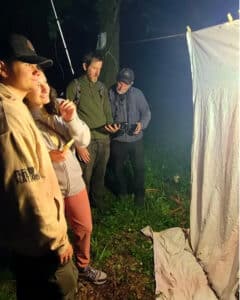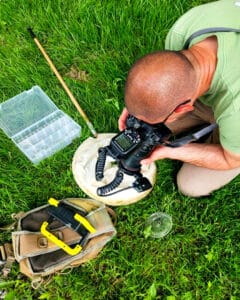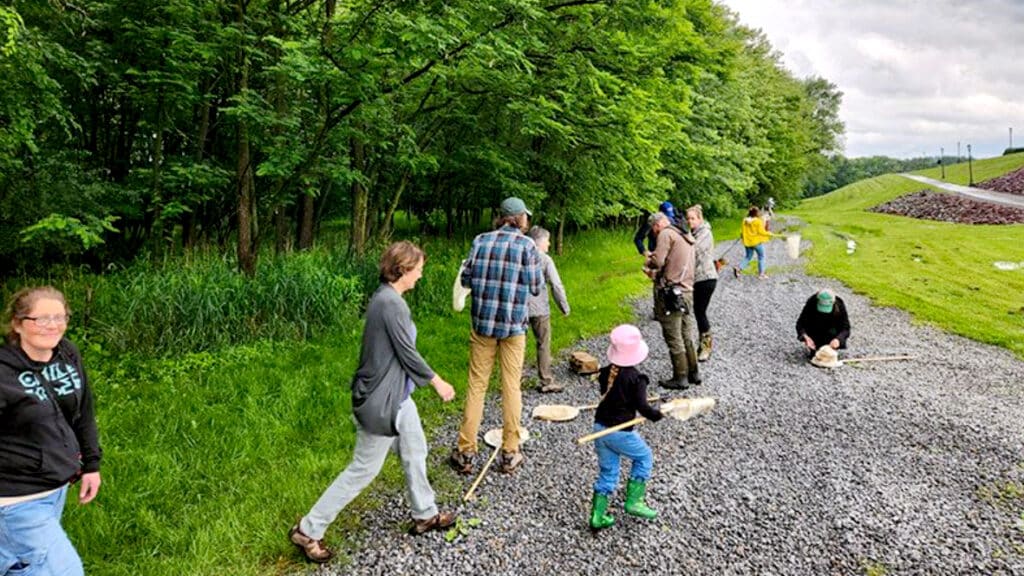The Pennsylvania Environmental Council is partnering with DiscoverNEPA on a series highlighting PEC projects, volunteer opportunities, Tail on the Trail activities and much more. This post was originally published Aug. 7 on the DiscoverNEPA blog.
Exploring Nature at BioBlitz

In May, the Riverfront Parks Committee hosted its first-ever BioBlitz across Kirby Park Natural Area in Wilkes-Barre and the adjoining Nesbitt Park. The event uncovered nearly 1,000 species and drawing naturalists, families, and nature lovers to explore wildlife right in their city parks.
A BioBlitz is a time-limited biodiversity survey, or basically a census of all living organisms in an area at a specific point time. Over 24 hours, teams of volunteers cataloged as many species as possible, including plants, fungi, insects, birds, mammals, trees, and more.
The BioBlitz offered an accessible way for residents to engage in science and understand local biodiversity. Many people never learn the names for the species that they see in their neighborhood, at the park, or on their daily commute, so this kind of event bridges the gap between academic ecology and its relevance within the local community.
An Entire Ecosystem Right Under Your Nose
Because of this event, what was once perceived as overgrown, urban green space is now understood to be home to just under 1,000 different species of living organisms. This includes 282 species of plant, 67 species of bird, 337 species of insect, 11 species of reptile and amphibian (note, cold weather and late timing for salamander breeding season likely impacted this), 105 species of mushroom, 12 mammals, and over 100 species of “other” classifications such as crustaceans, worms, arachnids, lichen, and macroinvertebrates.

This highlighted the ecological value and conservation importance of these parks, especially as the city continues work on the West Side Parks Master Plan. The event helped establish a direct connection between these everyday public spaces and their future role in outdoor recreation and environmental preservation.
This event went beyond a species count and gave us a broader understanding of the ecosystem. Many naturalists observed unusually large specimens of native plant species, likely a sign of rich, healthy soils in the park, which acts as a floodplain to the Susquehanna River. On the flip side, very few lichen were found. Lichen isn’t a single organism; it is a relationship between two different organisms known as a symbiotic relationship. Fungi and alga, both of which are sensitive to air pollution, make up lichen. Their absence likely reflects the impact of being so close to an urban area with deep industrial history.
Learning from Nature
This inaugural BioBlitz was a celebration of life within these parks and a commitment to lasting environmental stewardship in Wilkes‑Barre. With almost 1000 species of living organisms documented, the Kirby Park Natural Area and Nesbitt Park can serve as a nature-based classroom and an escape from the city just a short walk from home.
Whether you’re an experienced naturalist or simply curious, events like this are invitations to look closer at the world beneath your feet and understand the organisms that are also members of this community.
Organizers hinted at holding more BioBlitz events across seasons to build a more complete species inventory over time. Follow the RiverFront Parks Committee on Facebook for more information and other upcoming events!

